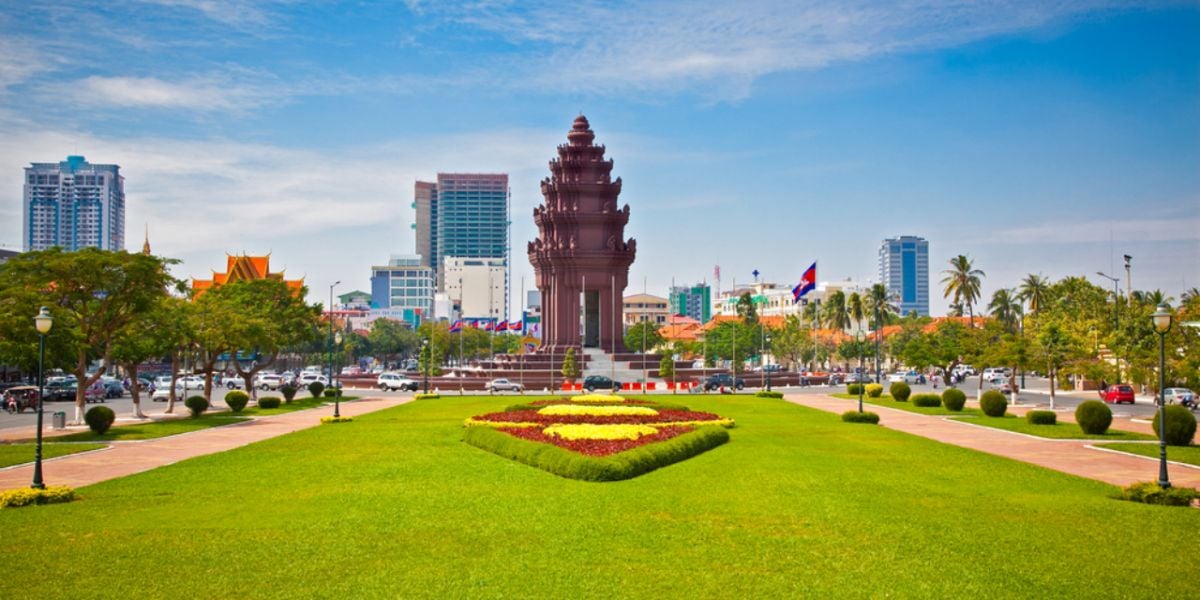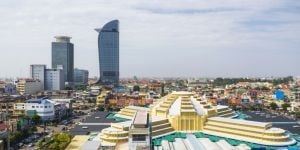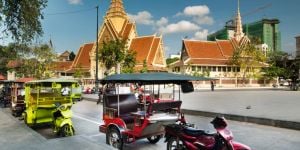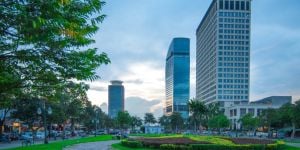
After endless hours of personal research, you decided to take the plunge and move to Cambodia. Congratulations! Your incredible journey in the Kingdom of Wonders is about to unfold. Phnom Penh is an ever-growing and evolving city that welcomes expats to help them continue to grow. But to truly go with the flow like a local, you will need to address a few things like currency, language, transportation, groceries and weather. In this article, we will cover these topics so that you can have a smoother transition into your new life in the big city.
Touchdown in Phnom Penh
First things first- arrival. You are likely to arrive in Phnom Penh by air. Phnom Penh's airport is the largest in the country, which makes flying in very simple. After your flight, you will need to arrange your visa. Depending on what country your passport is from this process will vary. It is best to read up on Cambodian visas so that you are well-prepared.
The next thing you will need to do is to familiarise yourself with the local currency and what the exchange rate is currently. In Cambodia, their currency is called the Riel. The exchange rate is usually around 4,100 Riel to USD 1, but on the street, it will always be 4,000 Riel to USD 1. Most prices are quoted in USD, and many people use USD to pay for everything, but we recommend against it. Using the Cambodian Riel helps to strengthen the economy, which in turn will benefit you as an expat.
Getting around Phnom Penh
Once you have got some cash to use in Phnom Penh, you are going to need to arrange for transportation from the airport to your hotel or arranged living. In Cambodia, there are quite a few ways to get around the larger cities: taxi, tuk-tuk, personal driver or motorcycle. Depending on your budget, you may want to choose accordingly. If you take a tuk-tuk, be sure to barter for a price beforehand.
Getting around Phnom Penh is often an easy task with the surplus of transportation options, but if you don't know a few simple terms in the local language, Khmer, you may find yourself going in circles- literally. A great way to familiarise yourself with the language is to get a guidebook, take a language lesson or talk to a local with terms you may look up on your own through web search.
Settling down in Phnom Penh
After settling, it is time to find some food. In Phnom Penh, it is quite easy to find plenty of great food options for you to try the local cuisine. Mealtimes can be quite specific in Cambodia, so try to get to restaurants and street food stalls during early peak hours of each mealtime. Often, lunch hours are slow, and most restaurants are closed, so you may need to prepare your own meal or head to an international restaurant.
Finding groceries is quite easy. There are plenty of wet markets to get your produce and home amenities at, scattered around the city, like the Central Market, Toul Tompoung Market or the Orussey Market. The best time to visit these markets for produce is early morning. For a more Western style of shopping visit an Angkor Mart, Super Duper or the Bayon Market. However, prices of produce and imported goods are higher here, and the quality can be lacking.
Something you may also notice in Cambodia is the use of bartering. Not every place or situation calls for it, but if you intend to go with the flow, you may be interested in trying it out. Things like produce, household appliances or clothing at markets, and transportation (especially tuk-tuks), can be bartered for a better expat price. For example, a tuk-tuk driver may quote the ride at $5 USD (20,000 Riel), so you can ask for $1-2 USD (4,000- 8,000 Riel) because that's typically the cost. Most vendors will quote you at the tourist price for these said goods, which is typically 2-3x's the local price. Things that can't be bartered for are things with price tags, handmade goods/art, and food.
The climate in Phnom Penh
Depending on the time of year you arrive in Cambodia, you may experience either the rainy season (May-October) or the dry season (November-April). During the rainy season, you can expect lower temperatures (25C or 77F) and sudden downpours in the afternoons with flooding until it stops raining. In the drier months, Cambodia turns into a draught with average high temps hitting roughly 31C (88F). With the close proximity to the equator, the UV is quite harsh, especially during peak sunlight hours, so be sure to take correct precautions to avoid sunburn and heat exhaustion. A great way to stay hydrated in the summer months is by drinking coconut and cane juice. You can also find great electrolyte packs in the pharmacies and markets.
Socialising in Phnom Penh
When moving to a new city, it is important to create friendships and networking. There are plenty of expat-based Facebook groups to help you develop your new social circle in Phnom Penh.
Welcome to the wonderful https://www.expat.community of Phnom Penh! It may feel a little overwhelming, but you are sure to get the hang of living like a local in no time.
Useful links:
We do our best to provide accurate and up to date information. However, if you have noticed any inaccuracies in this article, please let us know in the comments section below.








